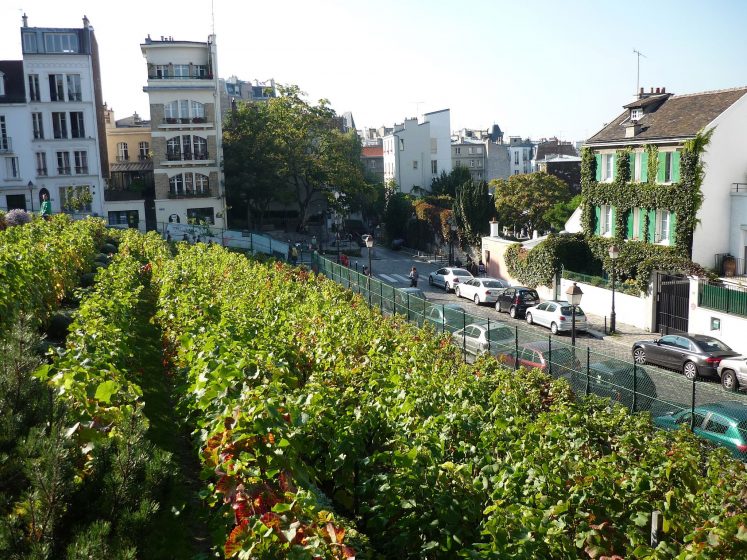The Best Strategy To Use For City Blooming
Our City Blooming Statements
Table of ContentsThe smart Trick of City Blooming That Nobody is Talking AboutAn Unbiased View of City BloomingThe Ultimate Guide To City BloomingThe smart Trick of City Blooming That Nobody is DiscussingThe Only Guide to City Blooming
Interested in expanding food available in the City of Chicago? Thinking of beginning a neighborhood yard? Changes to the Chicago Zoning Statute enable farming usages like area yards and urban farms in several parts of the city. Below is a list of regularly asked concerns regarding the guidelines and regulations that cultivators ought to think about when intending a city agriculture project.
The zoning amendment does not modify any various other codes taking care of composting, structure licenses, acquiring or leasing City owned property, service licenses or ecological contamination. There are existing codes that control these concerns and they remain completely impact and might apply to your task. Neighborhood gardens are usually possessed or handled by public entities, civic companies or community-based companies and kept by volunteers.
Urban ranches grow food that is planned to be sold, either on a nonprofit or for-profit basis. Due to their business function, city farms need a service certificate. Yes. A community garden is enabled to sell excess produce that was expanded on website if the sales are accessory or subordinate to the yard's key function explained over.
The 2-Minute Rule for City Blooming
The quantity of compost product can not go beyond 25 cubic backyards at any provided time according to the requirements in 7-28-715 of the City's Municipal Code. Since the soil at many brand-new yard sites needs changing, compost, soil, timber chips, or other materials can be acquired to build or enhance the growing area.

If a building authorization is called for then the hoophouse will be considered an accessory building. You can figure out more concerning the building authorization requirements by getting in touch with the Division of Structures. The 25,000-square-foot dimension limitation is intended to stop a single community yard from dominating an offered block or interfering with the block's existing property or industrial personality.
The limitation does not relate to yards situated in Public Open Space (POS) districts. Can there be even more than one area garden that is 25,000 square feet on a single block? Yes. The dimension limitation puts on individual gardens, not to individual blocks. No. Secure fencing is not required, nonetheless, yards that have huge parking lot may be needed to mount fence or various other landscaping features.
Getting The City Blooming To Work
B1 & B2 districts call for that all industrial usage activities be performed inside your home. Is secure fencing needed for metropolitan ranches? Fences may be needed, along with landscape design and testing, for certain parking locations and exterior work or storage areas depending on location and the specific activity taking place.
Urban farms need building permits and zoning authorizations prior to construction (balcony and patio garden design). Other types of city review may be needed depending on specific structures, tasks, size, landscaping, licensing, public health and stormwater monitoring concerns.
The Division of Company Affairs and Consumer Defense can aid identify the specific type of service certificate that's needed. Off street car park is needed for many commercial jobs in Chicago. The required number of parking spaces is based on the number of employees working on site and not the square check here video footage of the growing room.
The Only Guide to City Blooming

A metropolitan farm can market garden compost material produced on site, nonetheless, the procedure needs to comply with the policies in 7-28-715 of the Chicago Municipal Code. Aquaponic systems are enabled inside on metropolitan ranches in numerous zoning areas.
Up to 5 hives or colonies of honey bees might be maintained as an accessory usage. Beekeepers must sign up with the Illinois Department of Agriculture. To learn more concerning the suggested zoning amendment you may contact the Division of Housing and Economic Development, Bureau of Planning and Zoning at 312.744.8563.
Farming in cities and city locations An urban ranch in Chicago. Urban agriculture refers to numerous methods of cultivating. https://issuu.com/cityblooming, handling, and dispersing food in metropolitan areas. The term additionally uses to the location activities of pet husbandry, tank farming, beekeeping, and gardening in an urban context. Urban farming is distinguished from peri-urban farming, which takes location in country areas at the side of residential areas.
City Blooming - Questions
, who look for to create social networks founded on a common principles of nature and community holism. These networks can develop by means of official institutional assistance, becoming integrated right into neighborhood community planning as a "change community" movement for sustainable city growth.
Some of the very first proof of urban farming comes from Mesopotamia.